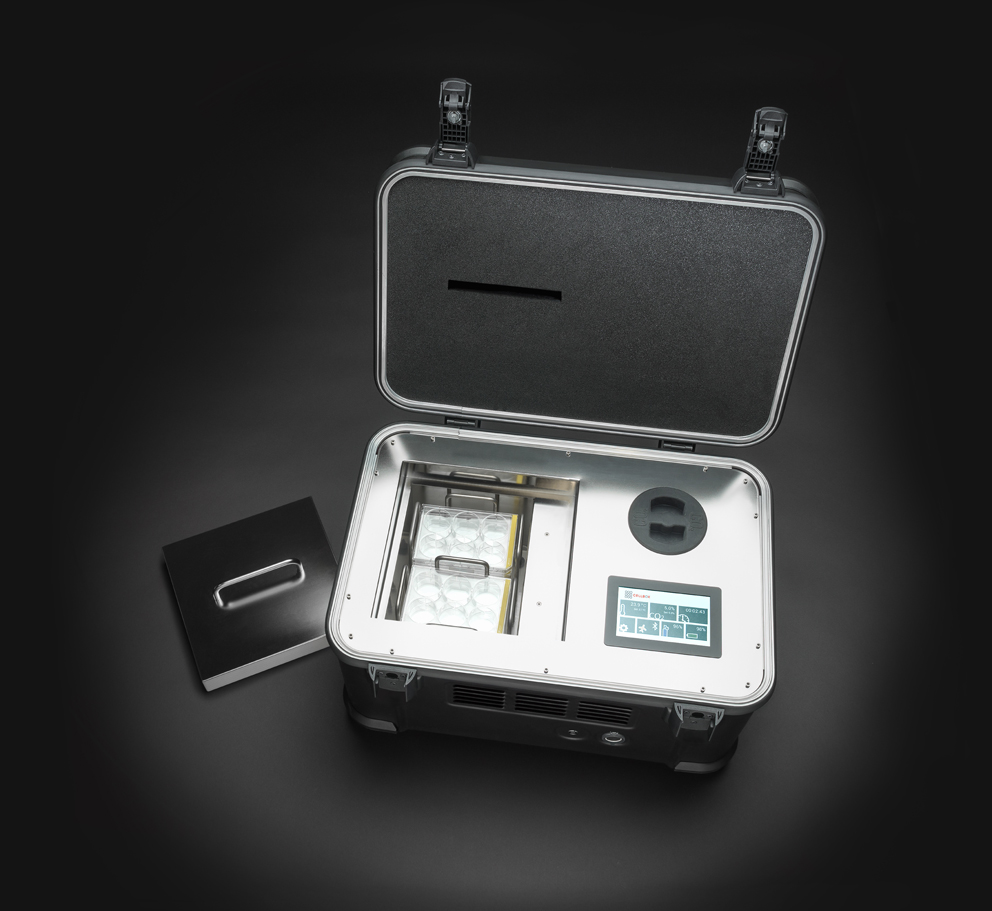PORTABLE, AUTARKIC CELL INCUBATOR FOR THE TRANSPORT OF LIVING CELLS
It is often necessary to send living cells, for example as part of a scientific cooperation, to industrial partners or to customers. Previously, the culture of cells in the incubator had to be interrupted for transport. Normal incubators for cell culture do not have their own energy source, are bulky, heavy and therefore unsuitable for transport tasks.
Cells are therefore often shipped on dry ice under undefined conditions, in particular in the absence of CO2 or in a frozen state. However, these methods are not an alternative to transport under culture conditions, but at best a compromise. They represent a substantial disruption of the current in vitro culture and have many undesired effects, such as proliferation inhibition, cell death or loss of cell-cell contacts. This leads to the loss of valuable time until the cells have returned to their original status.
In order to remedy this situation, a prototype of a transportable cell incubator, the "cell transport box", was developed in cooperation with the EMB working groups Scientific Instrument Design, Cell Technology and Diagnostic Markers. Equipped with sensors and a heating and cooling element, it actively regulates the gas atmosphere and the temperature required for the cells during transport. In mains operation, it can also be used as a table-top incubator in which cells are cultivated in standardised disposable articles.
In December 2016, a company was successfully spun off, Cellbox Solutions GmbH, which, together with EMB, is further developing the cell transport box to series maturity. The working group Cell based species protection accompanies the development of the prototype from the bioscientific side and carries out qualification and validation work in vitro in order to ensure the use of optimal materials and maximum quality preservation of cell-based samples and products, e.g. during international transport by air freight.
The project is funded by the European Union and the Land Economic Programme.

